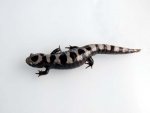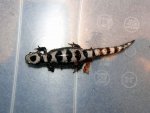- Joined
- May 7, 2007
- Messages
- 5,262
- Reaction score
- 226
- Points
- 63
- Location
- Hatfield, England
- Country
- England
- Display Name
- Julia
I was wondering about the substrate. I 'dug ' my lot out last night. I started in the usual spots, and then found them all together under flat stone. I have never found mine dug in..I am wondering if my substrate is too dry now  . I do a light spray once a week. I looked at the care sheet a few times and they do come from a range of areas..now I am worrying that I should make it moister.
. I do a light spray once a week. I looked at the care sheet a few times and they do come from a range of areas..now I am worrying that I should make it moister.




